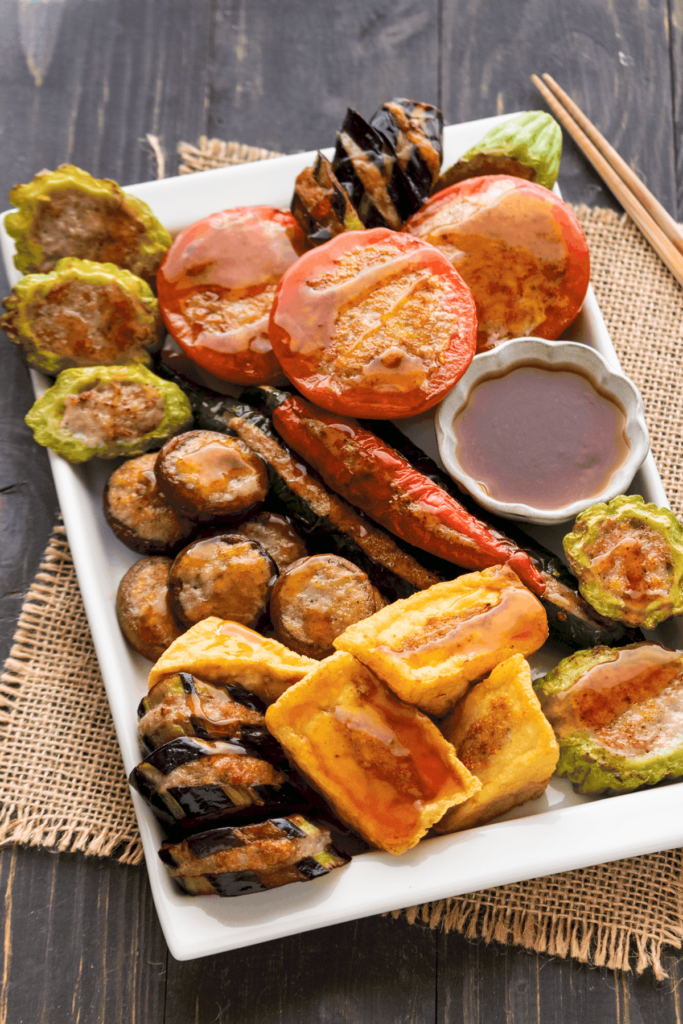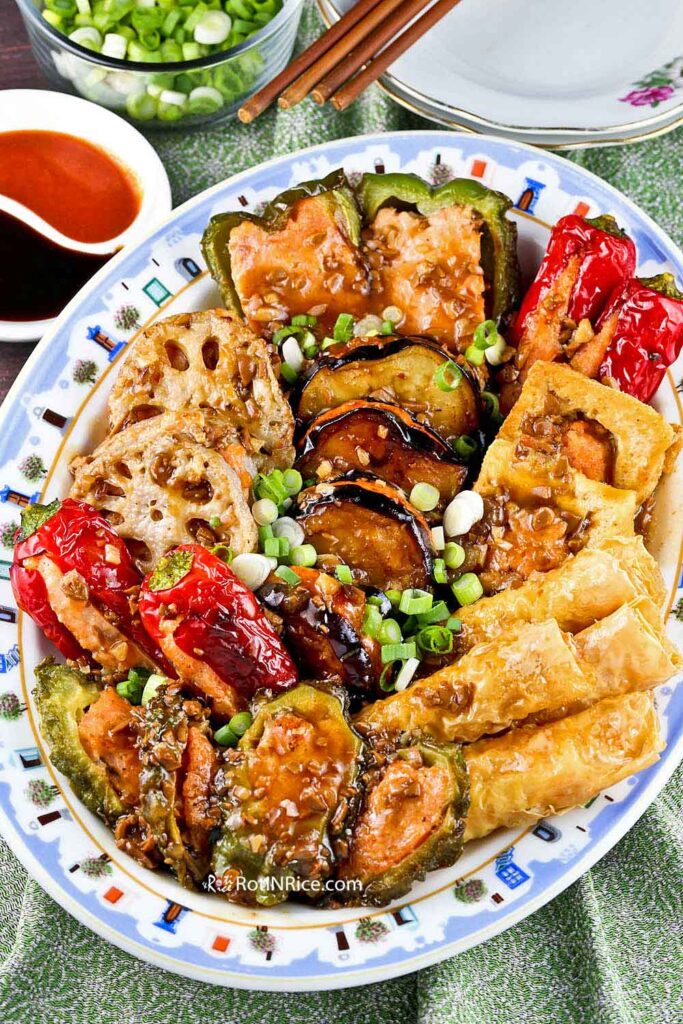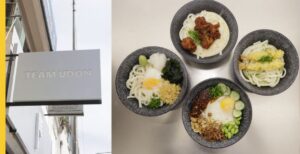Yong tau foo, a dish with roots in Hakka Chinese cuisine, is primarily made of tofu filled with a ground meat mixture or fish paste. Over time, variations of this dish have emerged, incorporating vegetables and mushrooms stuffed with ground meat or surimi. This versatile dish can be enjoyed dry with a sauce or as a soup, making it a favourite in many parts of Asia, including Malaysia.

Historical Background:
The origins of yong tau foo can be traced back to the Hakkas, who migrated southwards to escape wars in Northern China. Settling in Southern China, they adapted to the unavailability of wheat flour, which was traditionally used to make dumpling skins. Instead, they began using tofu as a substitute. The term “Nyong” in Hakka signifies the act of filling the tofu with stuffing, giving birth to the name “Yong Tau Foo”.

Variations and Regional Specialties:
- Fried Version: The traditional Hakka rendition of yong tau foo comprises tofu cubes generously filled with minced meat (often lamb or pork) and herbs. These are then fried to a golden hue or occasionally braised. This version also sees the use of condiments like eggplants and shiitake mushrooms, and it’s typically served in a clear yellow bean stew.
- Soup Version: In the Southeast Asian Hakka diaspora, “yong tau foo” denotes a soup dish where minced meat is replaced with fish paste (surimi). While the base remains tofu stuffed with fish paste, it’s now common to find vegetables like bitter melon and chilis stuffed with fish paste. This soup can also feature ingredients like fish balls, crab sticks, and sausages. It can be consumed as a standalone dish or accompanied by steamed rice or noodles.
- Malaysian Twist: In Malaysia, especially in the Klang Valley, yong tau foo holds a special association with the city of Ampang, Selangor. This region has its unique take on the dish, adding to its rich tapestry of variations.

Conclusion:
Yong tau foo stands as a testament to the adaptability and innovation of the Hakka people. Its rich history and diverse variations make it a cherished dish in Malaysia and beyond.
References
Article curated by Suwaytha Gopal




